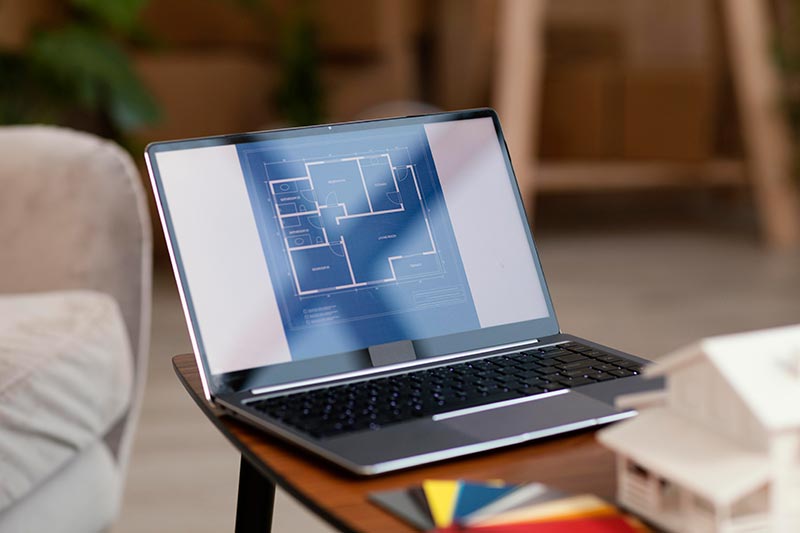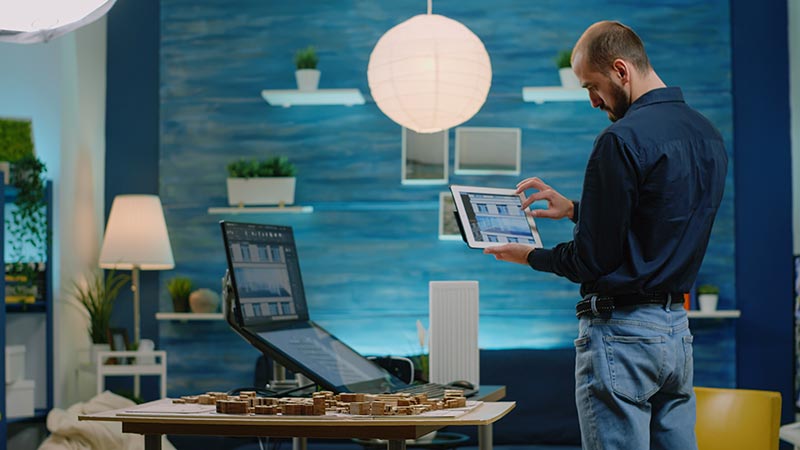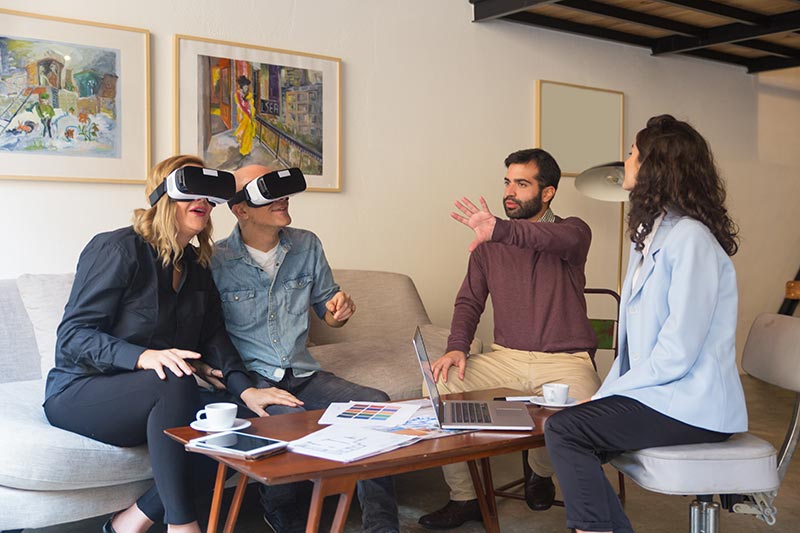Artificial intelligence has impacted almost all industries thanks to the benefits and advantages it brings. Recently, we have seen AI and machine learning in interior design. It is emerging as a powerful tool that helps interior designers create more functional, beautiful, and customized spaces. Read on to learn more about this and how to use it in your design endeavors.
Understanding Machine Learning in Interior Design

A subset of artificial intelligence, machine learning lets designers and their clients create more personalized spaces. It does this by analyzing vast amounts of data and identifying patterns, trends, and preferences to give you customized suggestions and recommendations.
It can give you color palette options and materials that resonate best with your clients’ styles and tastes. It can help you with furniture layouts to provide you with optimum functionality. In short, it streamlines the design process to better align with your and your clients’ needs and aesthetics.
The Benefits of Machine Learning in Interior Design

If you use machine learning in interior design, you can enjoy the following advantages:
Personalized designs – machine learning algorithms will analyze your client preferences, styles, and habits to provide tailor-made design recommendations. It offers a level of customization that ensures a space that reflects the unique aesthetics of your clients, delivering results that are more meaningful and engaging.
Improved efficiency – machine learning tools allow designers to automate repetitive tasks such as material selection, color matching, and furniture arrangement. This saves you time, energy, and resources and will enable you to focus on more important matters.
Better decision-making – with the vast amounts of data that machine learning analyzes, you’ll be better equipped when making significant decisions. With it, you will be updated on trends, consumer preferences, and popular styles.
Optimal space usage – machine learning tools analyze spatial data and user behavior, thus making them a great aid in optimizing the layout and organization of the spaces you design. This leads to more efficient space usage and the creation of clutter-free areas that help promote productivity and comfort.
Energy efficiency – machine learning algorithms optimize energy efficiency by optimizing energy use, lighting, and temperature control, among many others.
Sustainability – With efficient energy use comes sustainability, one of the best reasons to use machine learning in interior design. Not only that, it can craft designs that offer maximum functionality, better use of natural light, and optimum control of temperature.
Real-time feedback – with machine learning, you can get quick and real-time feedback for your designs. This helps you make instant adjustments and ensure the final design meets your clients’ expectations.
Maintenance anticipation – machine learning provides predictive analysis that can anticipate maintenance issues that may come up with a specific design. It enables you to create proactive steps and measures to help preserve the quality and longevity of the spaces. This can also help lessen the maintenance costs long-term.
Improved communication and collaboration – machine learning has the capability to facilitate easy cooperation between you, the clients, your design team, and the stakeholders. It also streamlines communication, improves coordination, and allows for a more cohesive design process.
Innovative and immersive experiences – you can use augmented reality (AR) and virtual reality (VR) technologies that will allow you to show your clients the designs even before construction is started. Your clients can experience and visualize your designs in an immersive and realistic way.
It gives you a competitive edge – using machine learning in your designs can help you craft highly customizable, efficient, and sustainable designs. Embracing the powers of AI, machine learning, and many other cutting-edge technology will show your clients your commitment to innovation and position you as a dynamic-thinking industry leader.
Boosting the Aesthetics in Interior Design Using Machine Learning

Machine learning offers many businesses a new level of aesthetic improvements to interior design. It can help enrich and customize spaces using visually appealing elements. Below is how machine learning can boost the aesthetics of your design:
Customized design recommendations – machine learning algorithms will analyze each of your client’s styles, preferences, and previous design choices to deliver tailor-made suggestions. This results in designs that suit their personality well.
Data-driven material and color selection – machine learning’s ability to process vast amounts of data enables it to identify color and material trends. You and your clients can use this to curate visually stunning combinations that are classic, modern, and timeless.
Better art and decor curation – since machine learning is excellent in identifying patterns, it is a perfect tool to curate art and decor for your designs. You can suggest artwork and decorative pieces that blend well with the design theme.
Improving Functionality with Machine Learning in Interior Design

With the aspect of functionality, machine learning can also provide many advantages. These are a few:
Smart space planning – machine learning algorithms can analyze spatial data and user behavior to give you the optimal layout of your interior spaces. It considers the traffic, accessibility, flow, and user preferences to craft well-organized and functional areas.
Better furniture arrangement – machine learning can recommend the most suitable furniture and furniture arrangements based on the size and layout of a room. This ensures that the furniture placement complements the design aesthetics and enhances the functionality and flow of the space.
User-focused designs – machine learning takes into account the user’s behavior and preferences when designing spaces. This enables designers to create rooms and houses specific to the clients’ needs and comfort.
Ergonomics – machine learning can help designers create designs that prioritize the ease and well-being of their occupants.
Adaptive designs – machine learning lets you create interiors that will respond to the changing needs and preferences of your clients. It can learn from user behavior to let you know of the best lighting, temperature, and many other design elements that provide the best comfort and functionality.
Examples of Interior Design Tools that Use Machine Learning
Final Thoughts
AI and machine learning has invaded so many industries, and it seems that it will continue. Interior designers will do better to leverage and embrace these technologies to create quick, easy, and sustainable masterpieces.
